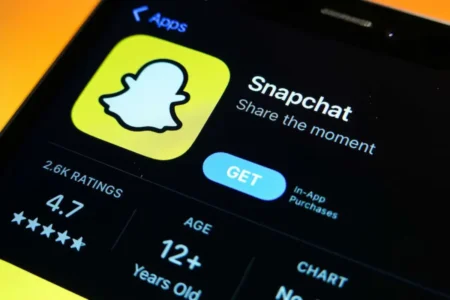Snapchat, the American multimedia instant messaging app, is rapidly positioning itself as a key player in India’s thriving creator economy, particularly in smaller cities and towns. With more than 200 million monthly active users in the country, the platform is offering new and innovative monetization options that are attracting regional creators, enabling them to earn from everyday content and share relatable experiences with a wide audience.
Snapchat has made significant investments in India, including expanding its team and resources to seize this opportunity. This approach underlines the importance of India as a critical market for the company. Saurabh Jha Saket, the newly appointed director of content and partnerships at Snapchat, emphasized that the platform views India as a “go-to market” for creators and advertisers alike.
Regional Content: Snapchat’s Key to Success in India
Regional content is proving to be a game-changer for Snapchat as it seeks to expand its footprint across India’s diverse landscape. Creators from smaller cities like Hisar, Jalandhar, and Jaipur are gaining significant popularity by sharing daily vlogs in regional languages, such as Punjabi, which has helped cement Snapchat’s appeal in regional markets.
“This is real India content,” said Saket, highlighting the importance of regional language content as a driver of growth for the platform. He also mentioned that the company’s efforts to onboard advertisers and creators have been pivotal in expanding the platform’s user base.
Snapchat is not alone in this race; other platforms like YouTube and Instagram have also recognized the potential of India’s creator economy. In fact, YouTube, owned by Alphabet, boasts over 476 million active users in India as of July 2024, while Instagram, owned by Meta, has over 385 million users, according to Statista. Despite the stiff competition, Snapchat’s focus on regional content and innovative monetization strategies sets it apart.
A Booming Creator Economy
According to a May 2024 report by Ficci-EY, India’s creator economy is expected to grow to ₹34 billion by 2026, up from ₹19 billion in 2023. Snapchat aims to be at the forefront of this booming market by offering creators multiple ways to monetize their content.
Among the key monetization options are:
- Story Revenue Share: Ads placed within public stories help creators earn revenue.
- Paid Brand Partnerships: Creators collaborate with brands to promote products and services.
- Spotlight Rewards: Exceptional content is rewarded through Snapchat’s virtual currency, “crystals,” which can be converted into dollars.
These diverse revenue streams allow creators to monetize their work without relying solely on follower count. Instead, Snapchat emphasizes genuine engagement and meaningful connections between creators and their audiences.
“Monetization is not the outcome—creators come to express themselves and connect, and the platform rewards genuine connections,” said Saket.
Empowering Regional Creators
For regional creators like Neetu Bisht, who has 2.3 million followers on Snapchat and 4.3 million on Instagram, Snap’s monetization model offers new opportunities. “Snapchat’s Spotlight provides a direct path for creators like me to earn without needing a massive following,” Bisht said. “The platform’s investment in augmented reality (AR) tools has opened up fresh opportunities for creators to engage with audiences in innovative ways.”
Snap’s Spotlight feature has seen a threefold increase in the time spent on the platform, with more than 120 million Indian users regularly consuming content across Stories and Spotlight. This presents a tremendous opportunity for both creators and advertisers, particularly in the growing space of social commerce.
The Power of AR and Social Commerce
Snapchat’s focus on camera technology and augmented reality (AR) lenses has allowed it to carve out a unique niche in the Indian market. The platform offers a gamified shopping experience through AR lenses, where users can try on virtual products like clothing and accessories. This makes Snapchat an appealing choice for brands looking to experiment with social commerce.
Luxury brands like Gucci are already leveraging Snapchat to engage with Gen Z users—one of the platform’s most significant demographics. Saket believes that while Snapchat’s audience skews younger, Gen Z has considerable influence over household purchases and is gaining purchasing power as the older segment enters the workforce.
“Brands, especially in sectors like e-commerce, fashion, and beauty, recognize the potential of this demographic,” Saket said.
A Shift Toward Authenticity
Post-pandemic, creators are becoming more selective about the platforms they use. A recent survey by a social media marketing firm revealed that 43% of content creators experience burnout on a monthly or quarterly basis, with 29% struggling daily or weekly. In this environment, Snapchat’s more relaxed and authentic approach to content creation is becoming increasingly attractive.
Hitarth Dadia, CEO of the influencer marketing agency Nofiltr Group, explained that Snapchat stands out for its ease of use and focus on real, raw content. “Snapchat has positioned itself as an authentic and raw platform. It’s the platform where capturing and publishing is quick and probably with the least amount of friction,” Dadia said.
As Snapchat continues to onboard creators from smaller cities and towns, it positions itself as a platform where aspiring creators can build sustainable careers. “The barriers to becoming a creator are lower, and Snap is the best manifestation of that,” Saket concluded.
Also Read:Rachael Richa Maria Adhia: The Trailblazing Beauty Queen and Entrepreneur
